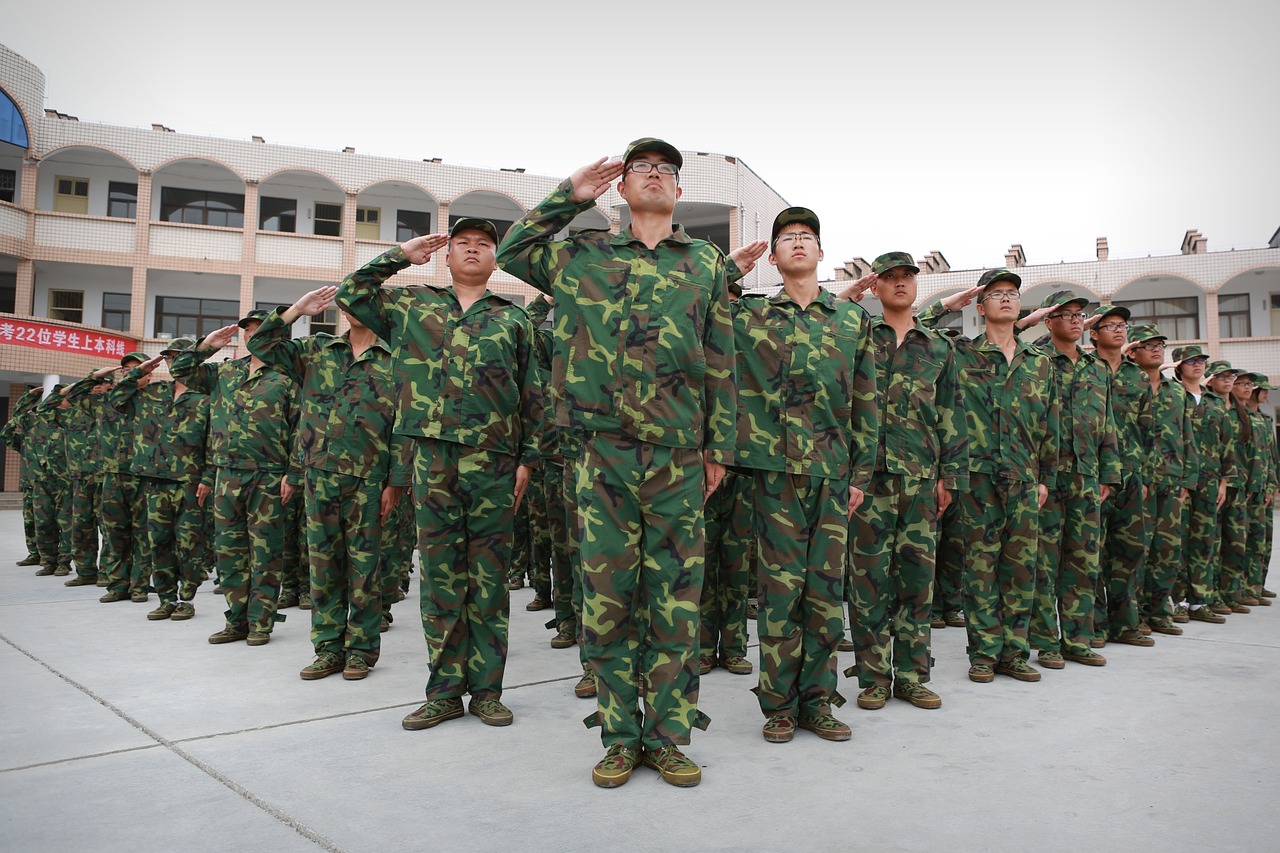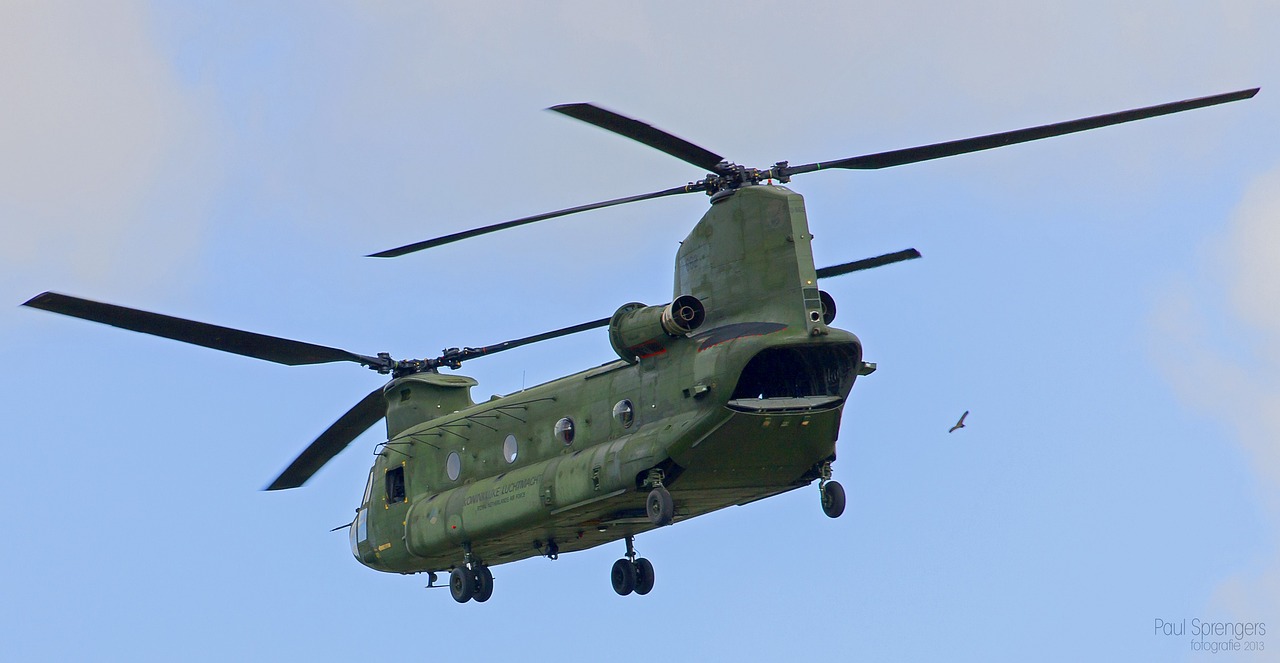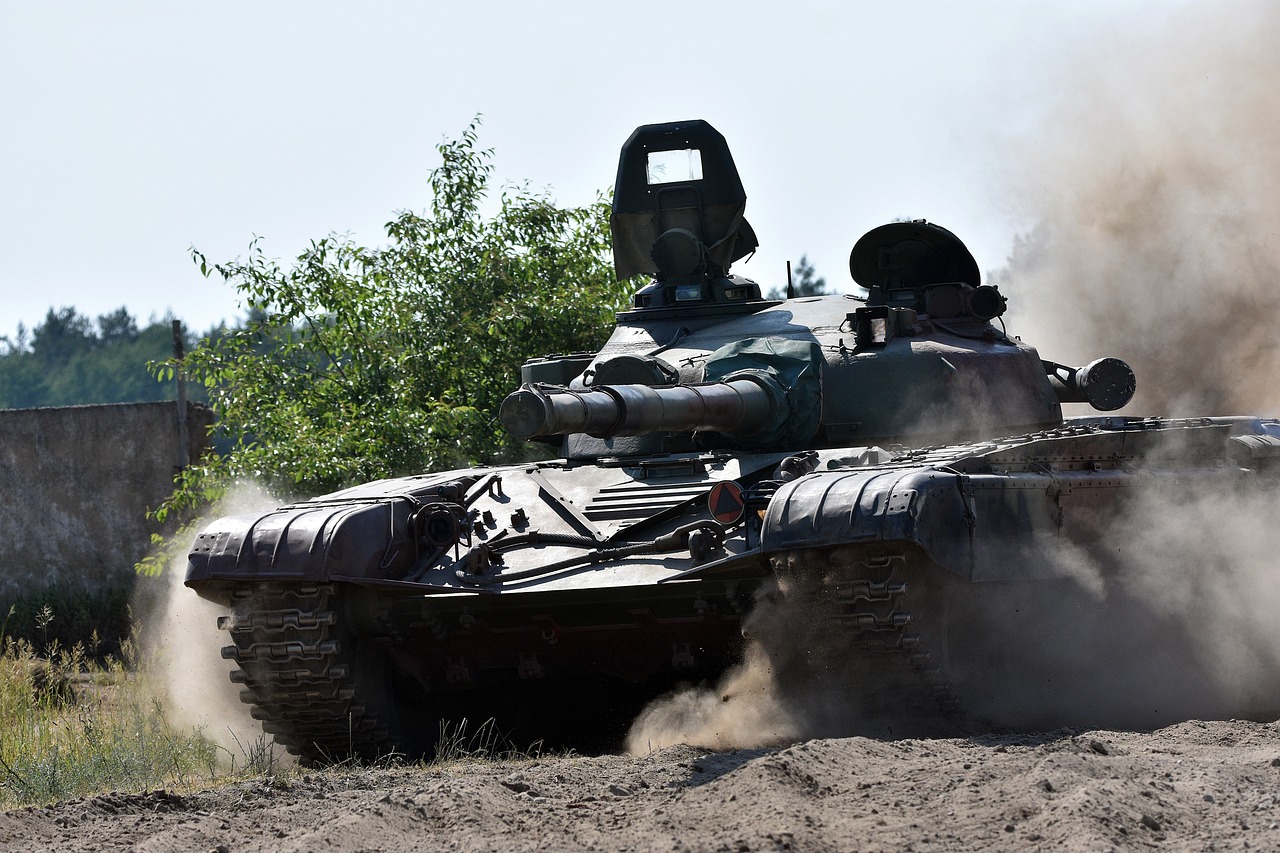AI-Powered Predictive Analytics in Battlefield Strategy
In today’s rapidly evolving battlefield landscape, the integration of AI-powered predictive analytics is nothing short of revolutionary. Imagine a scenario where military commanders can foresee potential outcomes of their strategies with remarkable accuracy. This isn't just a futuristic dream; it’s becoming a reality. By harnessing the power of data, military leaders can make informed decisions that enhance operational efficiency and effectiveness. The role of predictive analytics in military strategy is akin to having a crystal ball that reveals insights based on historical data and real-time information.
Predictive analytics is reshaping how military operations are conducted. It allows for the analysis of vast amounts of data to identify patterns and trends that human analysts might overlook. This capability can be the difference between success and failure in critical situations. With AI algorithms sifting through data, commanders can anticipate enemy movements, optimize resource allocation, and ultimately save lives. The implications are staggering—militaries around the world are beginning to realize that the future of warfare may depend on their ability to leverage these advanced technologies.
As we delve deeper into the transformative role of AI in battlefield strategy, it’s essential to understand the core components that make predictive analytics so effective. The foundation lies in the data—how it is collected, analyzed, and utilized to craft strategies. In the following sections, we will explore the various data collection techniques employed, the types of data that are most impactful, and the challenges faced in implementing these sophisticated systems.
Moreover, real-world case studies will illustrate the successful integration of AI-powered predictive analytics in military contexts. These examples will showcase not only the potential benefits but also the lessons learned from both successes and failures. As we look to the future, it becomes clear that the role of AI in military strategy is not just a trend; it is an essential evolution that will define the next generation of warfare.
Predictive analytics enhances military strategy by providing insights into potential outcomes, enabling commanders to make informed decisions based on data-driven forecasts and historical patterns.
Effective data collection is crucial for predictive analytics. This section discusses various methods used to gather intelligence, including sensors, reconnaissance, and open-source data.
Different types of data, such as structured and unstructured, play a vital role in predictive models. Understanding these data types helps in building accurate analytical frameworks.
Structured data, including numerical and categorical information, is essential for creating reliable predictive models. This subheading explores its significance in military analytics.
Unstructured data, such as images and text, provides context and depth to predictive analytics. This section highlights how unstructured data can enhance military strategy.
Implementing predictive analytics in battlefield strategy faces several challenges, including data security, integration issues, and the need for skilled personnel.
Real-world case studies illustrate how military organizations have successfully integrated AI-powered predictive analytics into their strategies, showcasing the benefits and lessons learned.
Examining success stories from different militaries reveals the diverse applications of predictive analytics, from logistics to threat detection, and their impact on operational success.
Analyzing failed implementations offers valuable insights into the pitfalls of predictive analytics in military contexts, emphasizing the importance of adaptability and continuous improvement.
The future of AI in battlefield strategy looks promising, with advancements in technology and data analytics set to revolutionize military operations and decision-making processes.
- What is AI-powered predictive analytics?
AI-powered predictive analytics refers to the use of artificial intelligence algorithms to analyze data and predict future outcomes, helping military leaders make informed decisions. - How does predictive analytics improve military strategy?
By providing insights into potential scenarios based on historical data and real-time information, predictive analytics allows commanders to anticipate enemy actions and optimize their strategies. - What types of data are used in military predictive analytics?
Both structured data (like numerical and categorical data) and unstructured data (like images and text) are utilized to build comprehensive predictive models. - What challenges are faced when implementing predictive analytics?
Challenges include data security concerns, integration with existing systems, and the need for skilled personnel to interpret the data effectively. - Can you provide examples of successful military applications of AI?
Yes, many militaries have successfully used AI for logistics optimization, threat detection, and strategic planning, showcasing significant improvements in operational success.

The Role of Predictive Analytics in Military Strategy
In today’s fast-paced and ever-evolving battlefield, the integration of predictive analytics into military strategy has become a game-changer. Imagine having the ability to foresee potential outcomes before they unfold, much like a chess player who can anticipate their opponent's moves several steps ahead. This capability allows military commanders to make decisions that are not only informed but also strategically advantageous. Predictive analytics leverages historical data, real-time information, and sophisticated algorithms to provide insights that were previously unimaginable.
The essence of predictive analytics in military strategy lies in its ability to transform raw data into actionable intelligence. By analyzing patterns and trends from past operations, military leaders can identify what strategies have succeeded and which ones have failed. This data-driven approach enhances the decision-making process, allowing for a more proactive stance rather than a reactive one. For instance, if past data indicates a particular enemy tactic, commanders can prepare countermeasures in advance, significantly reducing response time.
Moreover, predictive analytics plays a crucial role in resource allocation. In military operations, resources are often limited and must be utilized efficiently. By forecasting potential scenarios, military strategists can allocate personnel and equipment where they are most needed, optimizing operational efficiency. The ability to predict logistical needs and potential supply chain disruptions can mean the difference between mission success and failure.
To illustrate, let’s consider a hypothetical scenario where a military unit is preparing for an operation in a volatile region. By utilizing predictive analytics, they can analyze various factors such as:
- Weather conditions that could impact visibility and mobility
- Historical data on enemy movements in similar terrains
- Current troop morale and readiness levels
This comprehensive analysis allows commanders to devise a strategy that accounts for potential challenges, ensuring that they are not caught off guard.
Additionally, the integration of artificial intelligence with predictive analytics enhances the accuracy of forecasts. AI algorithms can process vast amounts of data at lightning speed, uncovering insights that would be nearly impossible for humans to identify manually. This synergy between AI and predictive analytics is paving the way for more sophisticated military strategies that are both agile and informed.
In summary, the role of predictive analytics in military strategy cannot be overstated. It equips military leaders with the tools necessary to make informed decisions, optimize resources, and anticipate future challenges. As technology continues to advance, the reliance on data-driven strategies will only grow, fundamentally reshaping the landscape of modern warfare.
- What is predictive analytics? Predictive analytics is the use of statistical techniques and algorithms to analyze historical data and predict future outcomes.
- How does predictive analytics benefit military strategy? It enhances decision-making, resource allocation, and operational efficiency by providing insights into potential future scenarios.
- What types of data are used in predictive analytics? Both structured data (numerical and categorical) and unstructured data (text, images) are utilized to create predictive models.
- Can predictive analytics guarantee success in military operations? While it significantly improves the chances of success, it cannot guarantee outcomes due to the unpredictable nature of warfare.

Data Collection Techniques for Predictive Analytics
In the realm of military strategy, the significance of effective data collection cannot be overstated. The foundation of predictive analytics lies in the data it processes, and the methods used to gather this data are critical in shaping outcomes on the battlefield. With the advent of advanced technology, military organizations have adopted a variety of techniques to collect intelligence that informs their predictive models. These techniques range from traditional reconnaissance to cutting-edge sensor technologies, all aimed at enhancing operational efficiency and decision-making.
One of the primary techniques employed is the use of sensors, which can be deployed across various terrains to gather real-time data. These sensors can monitor troop movements, environmental conditions, and even detect enemy activities. For instance, unmanned aerial vehicles (UAVs) equipped with cameras and other sensors provide a bird's-eye view of the battlefield, offering invaluable insights that would be impossible to obtain otherwise. The data collected through these UAVs can be analyzed to predict enemy strategies, allowing commanders to formulate countermeasures effectively.
Another vital technique in data collection is reconnaissance. This method involves gathering information through direct observation or surveillance. Reconnaissance missions can be conducted by ground troops or aerial units, and the data obtained can range from troop strength to the condition of enemy equipment. The information gathered is often processed and analyzed to identify patterns and trends, which are crucial for making informed predictions about future actions.
In addition to sensors and reconnaissance, the military also leverages open-source data. This refers to publicly available information, such as social media posts, news articles, and satellite imagery. By analyzing this data, military strategists can gain insights into public sentiment, enemy morale, and even potential threats. The ability to synthesize open-source data with classified intelligence creates a more comprehensive picture of the battlefield, enhancing the accuracy of predictive models.
To illustrate the importance of these data collection techniques, consider the following table that summarizes various methods and their applications:
| Data Collection Technique | Description | Applications |
|---|---|---|
| Sensors | Devices that gather real-time data on troop movements and environmental conditions. | Monitoring enemy activity, environmental analysis |
| Reconnaissance | Direct observation of enemy positions and movements. | Troop strength assessment, equipment condition |
| Open-source Data | Publicly available information analyzed for strategic insights. | Public sentiment analysis, threat detection |
In conclusion, the integration of diverse data collection techniques is pivotal for the success of predictive analytics in military strategy. By harnessing the power of sensors, reconnaissance, and open-source data, military leaders can make informed decisions that enhance operational effectiveness. As technology continues to evolve, the methods of data collection will undoubtedly advance, leading to even more sophisticated predictive analytics capabilities on the battlefield.
- What is predictive analytics in military strategy?
Predictive analytics involves analyzing data to forecast potential outcomes, enabling military leaders to make informed decisions based on historical patterns and real-time intelligence. - How do sensors contribute to data collection?
Sensors collect real-time data on various battlefield conditions, such as troop movements and environmental factors, which are crucial for making timely decisions. - What role does open-source data play in military intelligence?
Open-source data provides additional insights into public sentiment and enemy activities, complementing classified intelligence and enhancing strategic planning.

Types of Data Used in Predictive Models
In the realm of predictive analytics, especially within military applications, the types of data utilized are as diverse as the strategies they inform. Understanding these data types is crucial for constructing accurate predictive models that can significantly enhance decision-making on the battlefield. Broadly, data can be categorized into two main types: structured and unstructured data. Each type plays a unique role in shaping the insights derived from military operations.
Structured data refers to information that is organized in a defined manner, often in tables or databases. This type of data is easily searchable and analyzable because it adheres to a predefined format. Examples include numerical data, such as troop counts, logistical metrics, and equipment inventories, as well as categorical data like unit designations or mission types. The significance of structured data in military analytics cannot be overstated; it provides a solid foundation for creating reliable predictive models. For instance, by analyzing historical troop movement patterns, military strategists can forecast potential enemy actions and allocate resources more effectively.
On the other hand, unstructured data encompasses information that does not fit neatly into tables or databases. This includes a wide variety of formats such as images, videos, audio recordings, and text data from reports or social media. While unstructured data may seem chaotic, it offers invaluable context and depth to predictive analytics. For example, analyzing satellite imagery can reveal changes in enemy fortifications, while sentiment analysis of social media posts can provide insights into public opinion or morale in conflict zones. By integrating unstructured data into predictive models, military analysts can gain a more comprehensive understanding of the battlefield landscape.
To illustrate the importance of both data types, consider the following table:
| Data Type | Description | Examples |
|---|---|---|
| Structured Data | Organized information easily searchable in databases | Troop counts, logistics metrics, equipment inventories |
| Unstructured Data | Information that does not have a predefined format | Satellite images, social media posts, audio recordings |
In conclusion, both structured and unstructured data are essential components of predictive models in military operations. By leveraging these data types effectively, military strategists can enhance their operational efficiency and decision-making processes, leading to more successful outcomes on the battlefield.
- What is predictive analytics in military strategy?
Predictive analytics in military strategy involves using data analysis techniques to forecast potential outcomes and inform decision-making based on historical patterns and data-driven insights. - Why is data collection important for predictive analytics?
Effective data collection is crucial as it ensures that the predictive models are built on accurate and relevant information, ultimately leading to better strategic decisions. - What challenges do militaries face in implementing predictive analytics?
Challenges include data security concerns, integration issues with existing systems, and the need for skilled personnel to analyze and interpret the data.

Structured Data in Military Operations
In the realm of military operations, structured data serves as the backbone of effective predictive analytics. This type of data is highly organized, typically formatted into rows and columns, making it easily searchable and analyzable. Think of structured data as the well-ordered library of a military base, where every book (or data point) has its designated place, allowing quick access and retrieval. This organization is crucial for military strategists who rely on accurate and timely information to make critical decisions on the battlefield.
Structured data encompasses a wide array of information, including numerical data such as troop counts, equipment inventories, and logistical metrics, as well as categorical data like mission types, unit designations, and operational statuses. The significance of structured data in military analytics cannot be overstated; it enables commanders to identify trends, forecast outcomes, and allocate resources efficiently. For instance, by analyzing historical data on troop movements and engagements, military planners can predict the likelihood of success in various scenarios, ultimately leading to more informed decision-making.
Moreover, the integration of structured data into predictive models enhances operational efficiency. By utilizing advanced algorithms and statistical techniques, military analysts can sift through vast amounts of structured data to uncover actionable insights. This process can be likened to a skilled chef preparing a gourmet meal: each ingredient (data point) must be precisely measured and combined to create a successful dish (strategy). In this analogy, the chef's ability to predict how flavors will interact mirrors the military's use of data to anticipate outcomes and prepare for various contingencies.
However, the effectiveness of structured data hinges on its quality and accuracy. Inaccurate or outdated data can lead to misguided strategies and operational failures. Therefore, maintaining a robust data management system is essential. Regular audits and updates are necessary to ensure that the information remains relevant and reliable. Military organizations often employ dedicated teams to oversee data integrity, ensuring that the structured data used in predictive analytics is both current and accurate.
In conclusion, structured data is a vital component of military operations that significantly enhances predictive analytics. Its organized nature allows for efficient data retrieval and analysis, facilitating informed decision-making and improved operational efficiency. As militaries continue to evolve and embrace technological advancements, the role of structured data will only become more pronounced, shaping the future of battlefield strategy.
- What is structured data?
Structured data is highly organized information that is easily searchable and analyzable, typically formatted into rows and columns.
- Why is structured data important in military operations?
It enables military commanders to make informed decisions based on accurate and timely information, ultimately improving operational efficiency.
- How does structured data enhance predictive analytics?
By providing a reliable foundation for analysis, structured data allows military analysts to uncover trends and forecast outcomes effectively.
- What challenges are associated with structured data?
The main challenges include maintaining data quality and accuracy, as outdated or incorrect information can lead to misguided strategies.

Unstructured Data and Its Importance
In the realm of military strategy, unstructured data plays a pivotal role that is often overlooked. Unlike structured data, which is neatly organized into rows and columns, unstructured data comes in various forms—think images, videos, social media posts, and even audio recordings. This type of data is like a treasure chest, filled with insights just waiting to be discovered. The challenge lies in extracting meaningful information from this chaotic mix. So, why is unstructured data so important in military operations?
First and foremost, unstructured data provides context. For example, a photograph taken during a reconnaissance mission can reveal much more than just a visual representation of the terrain. It can indicate troop movements, identify potential threats, and even capture the emotional state of soldiers on the ground. Such insights are crucial for commanders who need to make quick, informed decisions in high-pressure situations.
Moreover, unstructured data enhances the depth of analysis. By analyzing social media chatter, military analysts can gauge public sentiment and predict potential uprisings or civil unrest in a region. This kind of predictive capability is invaluable. It allows military strategists to prepare for situations that might not be evident through traditional data sources.
To illustrate further, let’s consider a few key types of unstructured data that are particularly beneficial in military applications:
- Imagery: Satellite images and drone footage can provide real-time situational awareness.
- Textual Data: Reports, communications, and even news articles can offer insights into enemy strategies and public opinion.
- Audio Data: Intercepted communications can reveal enemy plans and morale.
However, the true power of unstructured data lies in its integration with structured data. When these two types of data work together, they create a more comprehensive picture of the battlefield. For instance, combining troop movement data (structured) with social media sentiment analysis (unstructured) can lead to more informed tactical decisions. This synergy is what makes modern military operations so dynamic and responsive.
In conclusion, unstructured data is not just a byproduct of the digital age; it is a vital component of modern military strategy. Its ability to provide context, depth, and actionable insights makes it an indispensable asset on the battlefield. As technology continues to evolve, the methods for analyzing and integrating unstructured data will only become more sophisticated, paving the way for even greater advancements in military operations.
- What is unstructured data? Unstructured data refers to information that does not have a predefined data model, making it more complex and varied, such as text, images, and videos.
- How is unstructured data used in military strategy? It is used to provide context, enhance analysis, and improve decision-making by integrating insights from various sources.
- What are some examples of unstructured data? Examples include social media posts, satellite images, audio recordings, and written reports.
- Why is unstructured data important? It offers deeper insights and context that structured data alone cannot provide, making it crucial for informed decision-making in military operations.

Challenges in Implementing Predictive Analytics
Implementing predictive analytics in military strategy is no walk in the park. It comes with its fair share of challenges that can hinder the effectiveness of these advanced technologies. One of the most pressing issues is data security. With sensitive military information at stake, any breach could not only compromise operations but also endanger lives. As a result, militaries must invest heavily in robust cybersecurity measures to protect their data from unauthorized access.
Another significant hurdle is the integration of various data sources. Modern warfare relies on a multitude of data streams—from satellite imagery to drone reconnaissance. Each of these sources may have different formats and standards, making it challenging to create a cohesive analytical framework. If the data can’t be integrated seamlessly, the predictive models may yield inaccurate or misleading results, which could have dire consequences on the battlefield.
Moreover, there is a growing need for skilled personnel who can navigate the complexities of predictive analytics. The military must not only recruit data scientists and analysts but also train existing staff to understand and implement these technologies effectively. This training requires time and resources, which can be a significant investment for military organizations. Without the right talent, even the best predictive models can fall flat.
Additionally, the rapid pace of technological advancement can create challenges in keeping military personnel up-to-date with the latest tools and techniques. As AI and machine learning continue to evolve, military organizations must stay ahead of the curve to leverage these advancements effectively. This can often feel like trying to hit a moving target—a daunting task indeed.
Finally, the cultural resistance to new technologies can also pose a challenge. Traditional military structures often prioritize time-tested methods and may be hesitant to adopt data-driven approaches. Overcoming this resistance requires not only a change in mindset but also a demonstration of the tangible benefits that predictive analytics can offer. The key here is to showcase success stories and foster a culture of innovation within military ranks.
In summary, while the potential of predictive analytics in military strategy is immense, the challenges of data security, integration, skilled personnel, technological advancement, and cultural resistance must be addressed to fully harness its capabilities. As military organizations navigate these obstacles, they pave the way for a future where data-driven decision-making becomes the norm rather than the exception.
- What is predictive analytics in the military context?
Predictive analytics in the military involves using data analysis techniques to forecast potential outcomes and inform decision-making processes based on historical data and trends. - Why is data security crucial in military predictive analytics?
Data security is vital because any breach could compromise sensitive military operations and endanger lives, making robust cybersecurity measures essential. - What types of data are used in predictive analytics?
Both structured data (like numerical and categorical information) and unstructured data (such as images and text) play significant roles in creating effective predictive models. - How can militaries overcome cultural resistance to new technologies?
By showcasing success stories and demonstrating the tangible benefits of predictive analytics, military organizations can foster a culture of innovation and encourage the adoption of new technologies.

Case Studies of AI in Military Applications
The integration of AI-powered predictive analytics in military applications is not just a futuristic concept; it’s a reality that various armed forces around the globe are embracing. These case studies showcase the transformative impact of AI on military operations, illuminating how data-driven insights can lead to better decision-making and enhanced operational efficiency. For example, the U.S. military has made significant strides in using AI for logistics and supply chain management. By leveraging predictive analytics, they can forecast supply needs, optimize transportation routes, and reduce waste. This not only saves resources but also ensures that troops have the necessary supplies at critical moments.
Another fascinating instance comes from the Israeli Defense Forces (IDF), where AI has been implemented to enhance threat detection capabilities. By analyzing vast amounts of data from surveillance systems, the IDF has developed algorithms that can predict potential threats based on historical patterns and real-time data. This predictive capability allows for quicker responses to emerging threats, significantly increasing the safety of personnel and assets. The ability to anticipate enemy movements and intentions gives military strategists a crucial edge on the battlefield.
In a different context, the British Army has utilized AI in training simulations. By incorporating predictive analytics into their training programs, they can create realistic scenarios that adapt based on the trainees' actions. This not only helps soldiers prepare for various combat situations but also allows commanders to analyze performance metrics and improve training methods. The adaptability of AI in these simulations is akin to having a personal trainer who constantly adjusts your workout based on your progress.
Moreover, the French military has explored the use of AI for cybersecurity applications. With cyber threats becoming increasingly sophisticated, predictive analytics helps in identifying vulnerabilities and potential breaches before they occur. By analyzing patterns in network traffic and user behavior, AI systems can alert cybersecurity teams to anomalies that may indicate a cyberattack, allowing for proactive measures to be taken. This is akin to having a security system that not only reacts to intrusions but also predicts them, thus fortifying defenses.
These case studies illustrate a common thread: the successful application of AI in military contexts hinges on the ability to harness data effectively. However, the journey is not without its challenges. Many militaries face hurdles such as data integration issues and the need for skilled personnel to interpret complex data sets. As we delve deeper into the lessons learned from these implementations, we can glean valuable insights into the future of AI in military strategy.
The success stories of AI implementation in military applications are as diverse as the nations that employ them. Each military has tailored its approach to predictive analytics based on its unique operational needs and challenges. For instance, the U.S. Navy has adopted AI technologies for predictive maintenance of its fleet. By analyzing data from sensors on ships, they can predict when equipment is likely to fail, allowing for timely repairs and reducing downtime. This proactive approach not only extends the lifespan of expensive military hardware but also ensures that naval forces remain operational when needed most.
On the other hand, the Indian Armed Forces have focused on integrating AI in intelligence gathering. By utilizing machine learning algorithms to sift through vast amounts of data from various sources, they can identify trends and patterns that human analysts might overlook. This enhanced intelligence capability allows for more informed strategic decisions and improves situational awareness on the battlefield.
As these case studies reveal, the applications of AI in military contexts are vast and varied. They demonstrate that, when implemented thoughtfully, predictive analytics can significantly enhance operational effectiveness and decision-making processes. However, learning from both successes and failures is crucial to refining these technologies and ensuring their continued evolution in military strategy.
- What is predictive analytics in military applications?
Predictive analytics in military applications involves using data analysis techniques to forecast future outcomes, enabling better decision-making and operational efficiency. - How does AI enhance military strategy?
AI enhances military strategy by providing data-driven insights that improve threat detection, logistics management, and training simulations, among other functions. - What are some challenges faced in implementing AI in the military?
Challenges include data security concerns, integration of diverse data sources, and the need for skilled personnel to interpret complex data. - Can AI predict enemy movements?
Yes, AI can analyze historical patterns and real-time data to predict potential enemy movements, giving military strategists a tactical advantage.

Success Stories from Various Militaries
When we think about the integration of AI-powered predictive analytics in military operations, several success stories stand out, illustrating how these technologies have transformed battlefield strategies. For instance, the United States military has effectively utilized predictive analytics to enhance its logistics operations. By analyzing historical data, they have been able to forecast supply needs accurately, ensuring that troops have the necessary resources without overstocking or wastage. This not only saves costs but also optimizes the supply chain, making it more responsive to the dynamic nature of military engagements.
Across the Atlantic, the British Army has leveraged predictive analytics in training simulations. By incorporating AI-driven models, they can simulate various combat scenarios, allowing soldiers to practice decision-making under pressure. This approach has significantly improved readiness and adaptability, as troops can experience a wide range of potential situations before facing them in real life.
Moreover, the Israeli Defense Forces (IDF) have made remarkable strides in threat detection through predictive analytics. By utilizing real-time data from surveillance drones and social media, the IDF can identify potential threats before they escalate. This proactive approach has led to more effective counter-terrorism operations, showcasing how timely data analysis can save lives and resources.
In Asia, the Indian Armed Forces have implemented predictive analytics to improve their border security measures. By analyzing patterns in cross-border movements and integrating satellite imagery, they can predict potential infiltration attempts. This intelligence-driven strategy has enhanced their operational efficiency and response time, making the borders more secure.
To illustrate the impact of these success stories, let's look at the following table summarizing key achievements:
| Military | Application of Predictive Analytics | Outcome |
|---|---|---|
| United States | Logistics Optimization | Cost savings and resource efficiency |
| British Army | Training Simulations | Improved readiness and adaptability |
| Israeli Defense Forces | Threat Detection | Proactive counter-terrorism operations |
| Indian Armed Forces | Border Security | Enhanced security and response time |
These examples not only highlight the diverse applications of predictive analytics but also underscore the importance of data-driven decision-making in modern military operations. Each success story serves as a testament to the potential of AI technologies in enhancing operational effectiveness. As militaries continue to embrace these innovations, we can expect even greater advancements in the future.
- What is predictive analytics in military strategy? Predictive analytics involves using data analysis techniques to forecast potential outcomes and inform decision-making in military operations.
- How do militaries collect data for predictive analytics? Militaries utilize various methods, including sensors, reconnaissance missions, and open-source data, to gather intelligence for analysis.
- What types of data are used in predictive models? Both structured data (like numerical information) and unstructured data (such as images and text) are critical for creating effective predictive models.
- What are some challenges in implementing predictive analytics? Challenges include data security concerns, integration of different data sources, and a shortage of skilled personnel to analyze the data.
- What does the future hold for AI in military strategy? The future looks promising, with ongoing advancements in technology and data analytics expected to revolutionize military operations and decision-making processes.

Lessons Learned from Failed Implementations
When it comes to implementing AI-powered predictive analytics in military contexts, the road is often riddled with challenges and unexpected obstacles. Learning from failures is just as crucial as celebrating successes. One of the most significant lessons learned is the importance of adaptability. Many military organizations have rushed into adopting new technologies without fully understanding their operational needs or the complexities of the systems involved. This haste can lead to costly missteps, where the technology fails to integrate seamlessly with existing processes.
Another critical insight is the necessity of data quality. In several cases, military units found themselves relying on incomplete or inaccurate data, which skewed their predictive models. For instance, during a joint exercise, a military unit attempted to use AI analytics to predict potential enemy movements. However, due to outdated intelligence and poor data collection methods, the predictions were way off the mark. This scenario underscores the need for robust data collection techniques and the establishment of reliable data sources.
Moreover, the human element cannot be overlooked. Implementations often failed not because the technology was faulty, but because personnel were not adequately trained to use it. In one notable case, a military branch invested heavily in AI systems but did not prioritize training for its operators. As a result, the personnel struggled to interpret the data effectively, leading to misguided strategies and wasted resources. This highlights the necessity for comprehensive training programs that ensure personnel are equipped to leverage the full potential of predictive analytics.
Additionally, the importance of communication among different branches of the military cannot be stressed enough. In many failed implementations, a lack of collaboration led to siloed information, where valuable insights were not shared across teams. This disconnection can severely limit the effectiveness of predictive analytics, as the whole is often greater than the sum of its parts. Creating a culture of communication and collaboration can help mitigate this issue and enhance operational effectiveness.
Finally, it’s crucial to embrace a mindset of continuous improvement. Many military organizations have treated the implementation of predictive analytics as a one-time project, rather than an ongoing process. The battlefield is constantly evolving, and so too should the strategies employed to navigate it. Regularly revisiting and refining predictive models based on new data and insights can lead to greater success and adaptability in future operations.
| Lesson | Description |
|---|---|
| Adaptability | Understanding operational needs before implementation. |
| Data Quality | Ensuring accurate and complete data for reliable predictions. |
| Human Element | Training personnel to effectively use the technology. |
| Communication | Fostering collaboration across military branches. |
| Continuous Improvement | Regularly updating models based on new data. |
- What are the main challenges in implementing AI in military operations?
Challenges include data security, integration issues, and the need for skilled personnel. - How can military organizations improve data collection?
By utilizing advanced sensors, reconnaissance methods, and open-source intelligence. - Why is training important in AI implementations?
Training ensures that personnel can effectively interpret and utilize data generated by AI systems. - What role does data quality play in predictive analytics?
High-quality data is essential for creating reliable predictive models that can inform strategic decisions.

The Future of AI in Battlefield Strategy
As we look toward the horizon of military operations, the integration of AI-powered predictive analytics stands to redefine the landscape of battlefield strategy. Imagine a world where decisions are not just based on intuition or historical precedents, but rather on real-time data analysis and predictive modeling. This isn't just a distant dream; it's becoming a reality. With advancements in machine learning and data processing, military leaders are poised to harness the power of AI to enhance operational efficiency and effectiveness.
One of the most exciting prospects is the ability of AI to process vast amounts of data at lightning speed. In today's fast-paced environment, the ability to analyze data from various sources—such as satellite imagery, drone surveillance, and battlefield sensors—can provide commanders with a comprehensive overview of the situation. This capability allows for quicker, more informed decisions that can mean the difference between success and failure in military operations.
Furthermore, the future of AI in battlefield strategy is not just about data collection and analysis. It's also about predictive modeling. By employing sophisticated algorithms, military strategists can forecast potential enemy movements and assess the likelihood of various scenarios unfolding. This predictive capability enables a proactive rather than reactive approach to warfare, allowing military forces to stay one step ahead of their adversaries.
However, with great power comes great responsibility. The implementation of AI in military strategy raises important ethical and operational questions. For instance, who is accountable when AI makes a decision that leads to unintended consequences? As we integrate these technologies, it is crucial to establish clear guidelines and frameworks to ensure responsible use. This includes addressing concerns about data privacy, security, and the potential for biased algorithms.
Moreover, training and equipping personnel to effectively utilize AI tools is paramount. The military must invest in education and training programs that not only teach the technical aspects of AI but also emphasize critical thinking and ethical considerations. As we move forward, the human element cannot be overlooked; the synergy between humans and AI will ultimately determine the success of these technologies in battlefield strategy.
As we envision the future, we can expect to see a surge in collaboration between military organizations and tech companies specializing in AI and data analytics. This partnership will foster innovation, leading to the development of more advanced tools and systems that can adapt to the ever-changing nature of warfare. The potential applications are vast, ranging from logistics optimization to real-time threat analysis, all aimed at enhancing operational readiness.
To summarize, the future of AI in battlefield strategy holds immense promise. With its ability to transform data into actionable insights, AI has the potential to revolutionize military operations. However, it is essential to approach this transformation with caution, ensuring that ethical considerations and personnel training are prioritized. As we stand on the brink of this new era, the question remains: Are we ready to embrace the future of warfare?
- What is AI-powered predictive analytics?
AI-powered predictive analytics involves using artificial intelligence to analyze data and forecast potential outcomes, helping military leaders make informed decisions. - How can AI improve military strategy?
AI can enhance military strategy by providing real-time insights, predicting enemy movements, and optimizing logistics, ultimately leading to more effective operations. - What are the ethical concerns regarding AI in the military?
Ethical concerns include accountability for AI decisions, data privacy, security issues, and the potential for biased algorithms affecting outcomes. - How important is personnel training in implementing AI?
Personnel training is crucial, as it ensures that military staff can effectively utilize AI tools while considering ethical implications and critical thinking. - What role will technology companies play in military AI?
Technology companies will collaborate with military organizations to develop advanced AI tools, fostering innovation and enhancing operational capabilities.
Frequently Asked Questions
- What is AI-powered predictive analytics in military strategy?
AI-powered predictive analytics refers to the use of artificial intelligence algorithms to analyze vast amounts of data and forecast potential outcomes in military operations. By leveraging historical data and real-time information, military commanders can make informed decisions that enhance operational efficiency and effectiveness.
- How does predictive analytics improve decision-making in the military?
Predictive analytics improves decision-making by providing actionable insights based on data-driven forecasts. It helps military leaders understand probable scenarios, assess risks, and allocate resources more effectively. This leads to quicker, more informed decisions on the battlefield.
- What types of data are used in predictive models?
Predictive models utilize both structured and unstructured data. Structured data includes numerical and categorical information, while unstructured data encompasses images, videos, and text. Both types are crucial for building comprehensive analytical frameworks that enhance military strategy.
- What challenges are associated with implementing predictive analytics?
Implementing predictive analytics can be challenging due to various factors such as data security concerns, difficulties in integrating new systems with existing ones, and the need for skilled personnel to analyze and interpret the data effectively.
- Can you provide examples of successful AI integration in military applications?
Yes! Many military organizations have successfully integrated AI-powered predictive analytics in areas like logistics optimization, threat detection, and battlefield simulations. These success stories highlight the tangible benefits of using data-driven strategies to enhance operational success.
- What lessons can be learned from failed implementations of predictive analytics?
Failed implementations often reveal critical lessons, such as the necessity for adaptability, the importance of thorough training for personnel, and the need for continuous improvement in processes. Understanding these pitfalls can help organizations refine their approach to predictive analytics.
- What does the future hold for AI in battlefield strategy?
The future of AI in battlefield strategy looks bright, with ongoing advancements in technology and data analytics poised to revolutionize military operations. As AI continues to evolve, its applications in predictive analytics will likely expand, leading to even more sophisticated decision-making processes.



















